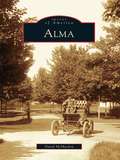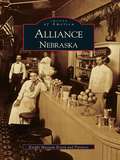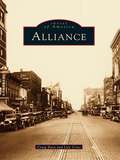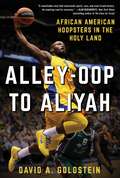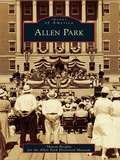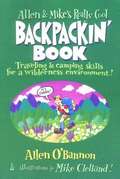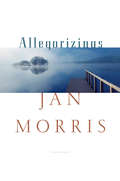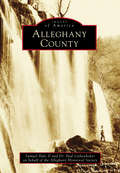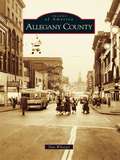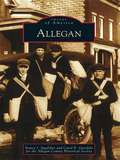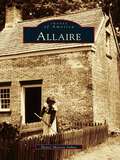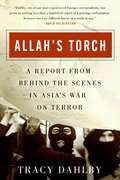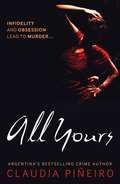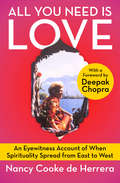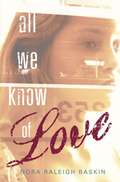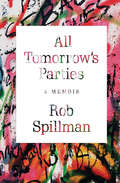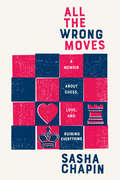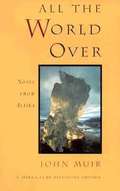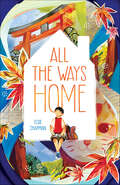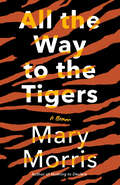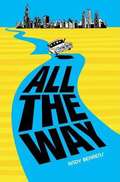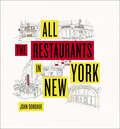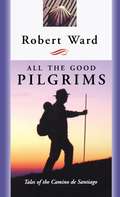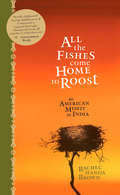- Table View
- List View
Alma
by David McmackenRalph Ely, founder of Alma, selected 10 acres of old forest on the bank of the Pine River in 1853. In this central-Michigan wilderness, he built a log cabin, a log store, and two steam-powered mills--a sawmill and a gristmill. At first, his growing settlement was called Elyton, but within a few years, it was renamed Alma, memorializing a battle in the Crimean War. Alma was energized by the acquisition of millionaire lumberman and entrepreneur Ammi W. Wright, who poured his resources into the town. Wright encouraged the establishment of Alma College in 1886 and the state Masonic home for the elderly in 1911. Wright laid the foundations for Alma's great Republic Truck Company, the largest exclusive maker of trucks in the world by 1920. The discovery of several oil fields prompted the establishment of two oil refineries in Alma in the 1930s and saved the town from the doldrums of the Great Depression. By the 1950s, Alma was a key national manufacturer of house trailers and mobile homes. This photographic panorama reflects the city's economic cycles and its institutions that have given Alma an enviable stability through the years.
Alliance, Nebraska (Images of America)
by Knight Museum Board and PartnersOnce heralded as the "Queen City of the Plains,"Alliance, Nebraska originated as a simple railroadjunction called Grand Lake. Founded on true pioneerspirit in 1887, Alliance has grown from a farm and ranchcommunity into a major retail center for Box Butte County.The Knight Museum showcases over 200 images in this newbook, depicting the history and growth of Alliance during its113-year history.Although there are many anonymous threads that makeup the social fabric of Alliance, readers will recognize themore familiar faces of the Newberry family, Dr. Frank Knight,Miss Susan Frazier, and Miss Katherine Schill. While somelandmarks are gone forever, such as the depot and the CoorsBuilding, many timeless photographs remain to guide thereader down the main street of Alliance's rich history. Fromthe vintage image of the county courthouse to the beautyof western Nebraska's largest park system, readers will get aglimpse of the pioneering spirit that is still so abundant.
Alliance (Images of America)
by Lyle Crist Craig BaraAccording to local history, General Robinson, a railroad official from Pittsburgh, Pennsylvania, named this Ohio town "Alliance" in 1850. Known for a short time as "The Crossing," Robinson believed that Alliance was a better name since the nation's two major railroads intersected here. The name stuck, and in 1854, the communities of Williamsport, Freedom, and Liberty incorporated as the town of Alliance. In 1889, the Village of Mount Union was annexed and Alliance became a city. Not only did therailroads help form our community, they established Alliance as a city of industry. Even though the town has remained relatively small, with approximately 23,000 citizens in 1990, industry has played a vital role in the development of Alliance. Many citizensattribute the strong leadership of the town's governing body to its industrial growth. This pictorial compilation documents the growth of the railroad and the stores and factories located along these railroad routes. Even today, the availabilityof trains and the intersection of key lines in Alliance is important to manufacturers.
Alley-Oop to Aliyah: African American Hoopsters in the Holy Land
by David A. GoldsteinEvery season, dozens of African American basketball players pack up their sneakers to play and live in Israel. They eat Israeli food, navigate Israeli hustle and bustle, experience cultural and religious customs in the world’s only Jewish country, and voluntarily expose themselves to the omnipresent threat of violence in the volatile Middle East. Some players are both Black and Jewish by birth. Others choose to convert to Judaism while residing in Israel. Some go so far as to obtain Israeli citizenship, enlist in the Israeli Army, marry Israeli women, and stay long after their playing careers end. Alley-Oop to Aliyah: African American Hoopsters in the Holy Land, is the first book to provide an in-depth exploration and analysis of the experiences of African American basketball players in Israel from the 1970s till today. Author David A. Goldstein examines how they end up in the country in the first place, the multitude of distinctive aspects of their lives there, the challenges and difficulties they face, and the reasons some choose to return to Israel year after year. In some cases they even decide to stay in Israel permanently. Alley-Oop to Aliyah not only deals with basketball and its impact on Israel, but it delves into emotion-laden issues of race, religion, identity, and politics, primarily through the eyes of the players themselves, based on more than forty extensive first-person interviews Goldstein, a sports journalist of half-Israeli descent, conducted. Their stories and their impact on Israel are at the very heart of this revealing book that is about more than just a game.
Allen Park
by Allen Park Historical Museum Sharon BroglinAllen Park's history begins when Native Americans hunted, fished, and paddled their canoes along the banks of Ecorse Creek. The French were among the earliest settlers, and after the land was cleared, German farmers arrived. Ecorse Township, known today as Downriver, was divided into seven different cities, and Allen Park was born. Once characterized as a "lazy, farming hamlet," Allen Park's residents were the most influential in developing the Village of Allen Park out of Ecorse Township, in 1927, and worked to become the City of Allen Park in 1957. Henry Ford's $5 workday prompted many farmers to sell to developers and go to work for Ford. Hungarians, Poles, Italians, and Armenians moved in, becoming the major ethnic groups within the community. Among the city's celebrities there have been writers, radio and sports personalities, cartoonists, and fashion designers. Towering over the Interstate 94 corridor in Allen Park, the Uniroyal Giant Tire has become an American icon, and although the Veterans Administration medical center is gone, it will forever live in residents' hearts. Enjoy the city's story, gathered from the files of the Allen Park Historical Museum.
Allen And Mike's Really Cool Backpackin' Book: Traveling And Camping Skills For A Wilderness Environment
by Allen O'Bannon Mike ClellandThe dynamic duo has done it again Following up on the incredible success of their two previous bestsellers, Allen and Mike's Really Cool Backcountry Ski Book and Really Cool Telemark Tips, these two National Outdoor Leadership School (NOLS) instructors and hardcore backcountry fanatics once again combine their years of experience into a hilarious and vastly informative book on the art of backpacking. Fans know how Allen O'Bannon and Mike Clelland play off each other to provide a one-two punch that makes readers laugh and learn at the same time. Beginning backpackers will cherish the advice, and experts who think they know it all are guaranteed to pick up a few tricks from this book -- while the entertainment value alone is worth the price. From day-hiking to extended expeditions, this book covers the whole spectrum of backpacking adventrue and is certain to become a classic of the genre. Allen O'Bannon is a senior NOLS instructor who writes books to support his ski habit. Mike Clelland is a NOLS instructor and illustrator who studied Mad magazine rather than go to art school. When not teaching NOLS classes, they live in Idaho, in the shadow of the Tetons.
Allegorizings
by Jan MorrisNew York Times Book Review • Editors' Choice Jan Morris delivers her final volume, brimming with reminiscences, meditations on daily life, and mini-essays on everything from maturity to whistling to Princess Diana. Not so long ago, feeling intimations of mortality, Jan Morris embarked on a wholly novel literary enterprise. What began as a series of high-minded letters to her late daughter—in the style of Lord Chesterfield addressing his son—quickly transformed itself into a potpourri of mini-essays and vibrant reminiscences, organized around experiences both majestic and mundane, from traveling the world with her lifelong partner, Elizabeth, to sneezing and kissing and simply growing old. So Allegorizings came to be, and so Morris decided that it should only be published upon her death, not because she had anything to hide but, merely, in parting. Featuring essays largely written in the early twenty-first century, Allegorizings reflects, above all, Morris’s steadfast conviction that nothing is only what it seems. In fact, she observes, everything is allegory. Indeed, in Morris’s telling, even life—the whole conundrum of existence—is one long, majestically impenetrable allegory. Taking us from the separatist hippie colony of Bolinas, California, to her home country of Wales, and introducing us to Nepalese Sherpas and elderly cruise-goers alike, Morris follows the throughline of allegory throughout her works. In one essay, she lambasts the joylessness of maturity (“Maturity! Did ever a heart thrill to the sound of it, still less the meaning?”) and in another, decries the nonsense of nationality. With characteristic verve, she offers odes to whistling and cursing, cats, and exclamation points. Morris’s travels anchor the collection, as she revisits the iconic settings of her previous works. We join her aboard the storied Orient Express, as well as tube trains passing through the purlieus of London. So too, we hike the foothills of the Himalayas—where Morris burst onto scene with her on-the-spot reportage of the first ascent of Everest—and reflect on the picaresque allure of Tournus, a dichotomized town in France where one France, bearing all the vestiges of privilege, seems to kiss another. Intimate and luminously wise, Allegorizings is as much a testament to the virtues of embracing life as it is a testament to its charming, indignant, and ever-surprising author. In her final work, Morris’s writing is as erudite as ever, conveying a generosity of spirit “flavored by well-earned crankiness” (Vox). Though newly bereft of her company, readers will be reminded what “a good, wise, and witty companion” (Alexander McCall Smith) Morris has been to so many, for so long.
Alleghany County (Images of America)
by Alleghany Historical Society Dr Paul Linkenhoker Samuel Hale IIAlleghany County was formed in 1822 from parts of Botetourt, Bath, and Monroe Counties. The area was settled in 1746, and by the early part of the 19th century, a number of settlements and large farms were operating locally. Covington, Clifton Forge, Iron Gate, Longdale, Selma, Low Moor, and other small communities developed, and the natural resources in the area led to the establishment of several industrial operations. The railroad came to Selma in 1857, and after the Civil War, the Chesapeake & Ohio Railroad was completed to Huntington, West Virginia. The abundance of timber, rich deposits of iron ore, and accessibility to rails, rivers, and streams contributed to industrial growth. Brickyards, lumber mills, tanneries, iron smelters, and agricultural operations attracted other businesses and industries, bringing rapid growth to the area. In Covington, the West Virginia Pulp and Paper Company built a mill in 1899. Ever since, the company has served as the county's economic mainstay.
Allegany County
by Dan WhetzelAllegany County's historical significance covers a broad range of topics and years. Established in 1789, the county rapidly developed in the 19th century due to transportation advantages, industrialization, natural resources, and the entrepreneurial spirit of its citizens. Allegany County's economy continued to expand in the 20th century, as additional industries made western Maryland their home. Industrial growth created towns and commercial opportunities that have shaped the county's character for more than two centuries.
Allegan (Images of America)
by Carol Garofalo Allegan County Historical Society Nancy J. IngalsbeeDuring the summer of 1834, a group of eastern land investors set its sights on newly platted land at the "great bend" in the Kalamazoo River, now known as Allegan. This former site of a Pottawatomi village was blessed with both beauty and bounty. Surrounded by woods and with a river racing throughit, a busy community of commerce and recreation was envisioned. It was a perfect combination for enjoyable and productive lives for those who would purchase parcels of land. They could never imagine the many changes their riverside village would see--the part it would play in the rebuilding of Chicago after the Great Fire of 1871; Allegan's own devastating fire in 1884, which destroyed the downtown area; the arrival and departure of various businesses; and the phenomenon of countless local families who have had a continuous presence in Allegan for many generations. It is the stories behind these photographs of people, businesses, and events that bring Allegan's past to light in such a marvelous way.
Allaire (Images of America)
by Hance Morton SitkusAllaire traces the history and culture of the village from its days as a famous nineteenth-century industrial community to one of today's most popular living history museums in New Jersey. In 1822, James P. Allaire established the Howell Works, one of many bog-iron furnaces that once dotted the New Jersey Pine Barrens. Explored are the rise and fall of the industrial community, as well as the village's transition from the Allaire family to Arthur Brisbane, a famous Hearst newspaper editor. Also included are the early restoration efforts of Allaire Village and some familiar sites on the outskirts of Allaire, including Kessler Farms, Thompson's Dairy Farm, the Pine Creek Railroad, DeLisle's French Restaurant, and Allaire Airport. In 1836, more than three hundred people lived and worked at Howell Works, a self-sufficient community once complete with thirty buildings. The collapse of the bog-iron industry in the late 1840s left the village crumbling and nearly deserted by 1900. In 1907, on a leisurely drive from his Lakewood mansion, Arthur Brisbane bought Allaire Village. Revitalizing it, he created a luxurious country estate. Allaire contains images of the Allaire Inn, Brisbane's model farm, and the Boy Scouts' Camp Burton. During the 1900s, Allaire was home to the legendary Indian Joe, the Pennsylvania Railroad's doodlebugs, and Brisbane's full-time staff-the Macauley, Frostick, Service, and Reynold families.
Allah's Torch
by Tracy DahlbyOn the front-lines with the building of Al Queda forces in Indonesia both before and after 9/11, written in provocative style by the former Asia bureau chief for Newsweek International. In Allah's Torch, National Geographic's Tracy Dahlby takes readers into the sprawling, porous, virtually lawless domain of Indonesia, where overlapping lines of radical Islamic rage are now converging in Asia, posing new threats to Westerners at home and abroad. From the moment the adventure begins, the night the author blunders on board an Indonesian passenger ship with 600 Islamic warriors on an anti-Christian jihad, readers glimpse the passions, politics and personalities fuelling radical Islam's relentless march. We listen as Koran-thumping preachers, hardened holy warriors and fresh-faced recruits, police investigators, military commandos, and spies try to make sense of the epidemic chaos that threatens the region - and now the world beyond. Based on reporting both before and after September 11, Allah's Torch is an action-packed and thought-provoking narrative that enables readers to see the face of Islamic terror more clearly and assess the threat for themselves.
All Yours
by Miranda France Claudia PiñeiroPraise for Claudia Piñeiro's Thursday Night Widows: "An agile novel, a ruthless dissection of a fast decaying society."--José Saramago, winner of the Nobel Prize for Literature "A gripping story. The dystopia portrayed is an indictment not solely of an assassin but of Argentina's class structure and the willful blindness of its petty bourgeoisie."--The Times Literary Supplement "A fine morality tale which explores the dark places societies enter when they place material comfort before social justice, and security before morality."--Publishers Weekly Ines is convinced that every wife is bound to be betrayed one day, so she is not surprised to find a note in her husband Ernesto's briefcase with a heart smeared in lipstick crossed by the words "All Yours" and signed, "Your true love." She follows him to a park on a rainy winter evening and witnesses a violent quarrel he has with another woman. The woman collapses; Ernesto sinks her body in a nearby lake. When Ernesto becomes a suspect in the case she provides him with an alibi. After all, hatred can bring people together as urgently as love. But Ernesto cannot bring his sexual adventures to an end, so Ines concocts a plan for revenge from which there is no return. Claudia Piñeiro, formerly a journalist and playwright, is the author of literary crime novels that are all bestsellers in Latin America and have been translated into six languages. All Yours follows on the success of Thursday Night Widows, published in 2010 in the United States.
All You Need Is Love: An Eyewitness Account of When Spirituality Spread from East to West
by Nancy Cooke de HerreraWritten decades before Eat, Pray, Love, this inspiring memoir details one woman's incredible journey through India to bring Eastern spirituality to the Western world. Even before she arrived at the ashram of Maharishi Mahesh Yogi, founder of Transcendental Meditation, in Rishikesh, India, a city at the foothills of the Himalayas along the banks of the Ganges River, in 1962, Nancy Cooke de Herrera lived a lifetime of adventure. During the 1950s, she traveled the globe as a goodwill ambassador of the US State Department, giving lectures on American fashion, culture, and customs. But when her beloved husband, Luis, died, de Herrera sought a life of greater meaning. The Maharishi became her guru, mentor, and friend, and in return she served as his publicist, spreading his message of peace and love wherever she went. In this remarkable autobiography, with a foreword by Deepak Chopra, de Herrera recounts not only her international escapades but also her inner journey to spiritual enlightenment. Trained by the Maharishi, she returned home and taught meditation to troubled youth, HIV/AIDS patients, and celebrities such as Madonna, Sheryl Crow, and Greta Garbo. Her publicity efforts led to the explosion of interest in meditation, yoga, and Eastern spirituality in America. Rich in endearing anecdotes about life at the ashram with famous visitors, including the Beatles, Mia Farrow, and Mike Love, and pieces of timeless wisdom, All You Need Is Love reveals a life lived with compassion, open-mindedness, and the belief that one person can change the world.
All You Knead Is Love
by Tanya GuerreroTanya Guerrero's All You Knead Is Love is a contemporary middle grade coming-of-age novel about a twelve-year-old multiracial Filipino and Spanish girl who goes to live with her grandmother for the summer, gaining confidence through a newly discovered passion for baking, perfect for fans of Hello, Universe and Merci Suarez Changes Gears.Sometimes you find home where you least expect it.Twelve-year-old Alba doesn't want to live with her estranged grandmother in Barcelona. She wants to stay with her mom, even if that means enduring her dad's cutting comments to them both.But in her new home, Alba forms a close relationship with her grandmother, gains a supportive father figure and new friends, and even discovers a passion and talent for baking. And through getting to know the city her mother used to call home, Alba starts to understand her mother better—and may just be able to make their family whole again.
All We Know of Love
by Nora Raleigh BaskinThe author of "What Every Girl (Except Me) Knows" returns with a boldly original tale about a girl who journeys through love and loss to find her mother and discovers that everyone has a story to tell--including herself.
All Tomorrow's Parties: A Memoir
by Rob Spillman&“In this carefully wrought coming-of-age memoir, a young American writer searches for home in an unlikely place: East Berlin immediately after the fall of the wall.&” —Publishers Weekly, starred review Rob Spillman—the award-winning, charismatic cofounding editor of the legendary Tin House magazine—has devoted his life to the rebellious pursuit of artistic authenticity. Born in Germany to two driven musicians, his childhood was spent among the West Berlin cognoscenti, in a city two hundred miles behind the Iron Curtain. There, the Berlin Wall stood as a stark reminder of the split between East and West, between suppressed dreams and freedom of expression. After an unsettled youth moving between divorced parents in disparate cities, Spillman would eventually find his way into the literary world of New York City, only to abandon it to return to Berlin just months after the Wall came down. Twenty-five and newly married, Spillman and his wife, the writer Elissa Schappell, moved to the anarchic streets of East Berlin in search of the bohemian lifestyle of their idols. But Spillman soon discovered he was chasing the one thing that had always eluded him: a place, or person, to call home. In his intimate, entertaining, and heartfelt memoir, Spillman narrates a colorful, music-filled coming-of-age portrait of an artist&’s life that is also a cultural exploration of a shifting Berlin. &“With wry humor and wonder, Spillman beautifully captures the deadpan hedonism of the East Berliners and the city&’s sense of infinite possibility.&” —The New York Times Book Review &“A thrilling portrait of the artist as intrepid young adventure seeker.&” —Vanity Fair &“Convivial, page-turning . . . Spillman&’s life is a good one to read.&” —The Washington Post
All the Wrong Moves: A Memoir About Chess, Love, and Ruining Everything
by Sasha ChapinAn enthralling journey into the world of chess--a story of heartbreak, obsession, failure, and the hunger for greatness.Sasha Chapin is a victim of chess. Like countless amateurs before him--Albert Einstein, Humphrey Bogart, and Marcel Duchamp among them--the game has consumed his life and his mind. First captivated by it as a member of his high school chess club, he found his passion rekindled during an accidental encounter with chess hustlers on the streets of Kathmandu. In its aftermath, he forgot to care about anything else. Like a spurned lover, he tried to move on, but he found the game more seductive the more he resisted it.And so, he reasons, if he can't defeat his addiction, he will try instead to master the game.All the Wrong Moves traces Chapin's rollicking two-year journey around the globe in search of glory. He travels to tournaments in Bangkok and Hyderabad. He seeks out a mentor in St. Louis, a grandmaster whose personality is half rabbi and half monk, and who offers cryptic wisdom and caustic insults ("you're the best player in your chair.") His story builds toward the Los Angeles Open, where Chapin is clearly outmatched and yet determined not to lose.Stylish, inventive, and laugh-out-loud funny, All the Wrong Moves is more than a work of history or autobiography. It is a chronicle of the highs and lows of obsession, of love pursued to its limits, and of a life driven by lust, terror, and the elusive possibility of victory.
All the World Over: Notes From Alaska
by John MuirMuir explores into the vast and varied splendors of the natural world in Alaska.
All the Ways Home
by Elsie Chapman"In All the Ways Home, Elsie Chapman gracefully explores the complexities of family and loss. The specificity in which Chapman narrates Kaede's journey in Japan is particularly satisfying. An insightful, compassionate, and honest look at a young boy's search for identity and home after the death of his mother."—Veera Hiranandani, author of Newbery Honor novel The Night DiarySometimes, home isn’t where you expect to find it.After losing his mom in a fatal car crash, Kaede Hirano--now living with a grandfather who is more stranger than family--developed anger issues and spent his last year of middle school acting out. Best-friendless and critically in danger repeating the seventh grade, Kaede is given a summer assignment: write an essay about what home means to him, which will be even tougher now that he's on his way to Japan to reconnect with his estranged father and older half-brother. Still, if there's a chance Kaede can finally build a new family from an old one, he's willing to try. But building new relationships isn’t as easy as destroying his old ones, and one last desperate act will change the way Kaede sees everyone--including himself. This is a book about what home means to us—and that there are many different correct answers.
All the Way to the Tigers: A Memoir
by Mary MorrisFrom the author of Nothing to Declare, a new travel narrative examining healing, redemption, and what it means to be a solo woman on the road. <P><P>In the tradition of Wild by Cheryl Strayed and Eat, Pray, Love by Elizabeth Gilbert, Mary Morris turns a personal catastrophe into a rich, multilayered memoir full of personal growth, family history, and thrilling travel. <P><P>In February 2008 a casual afternoon of ice skating derailed the trip of a lifetime. Mary Morris was on the verge of a well-earned sabbatical, but instead she endured three months in a wheelchair, two surgeries, and extensive rehabilitation. <P><P>On Easter Sunday, when she was supposed to be in Morocco, Morris was instead lying on the sofa reading Death in Venice, casting her eyes over these words again and again: "He would go on a journey. Not far. Not all the way to the tigers." Disaster shifted to possibility and Morris made a decision. When she was well enough to walk again (and her doctor wasn't sure she ever would), she would go "all the way to the tigers." <P><P>So begins a three-year odyssey that takes Morris to India in search of the world's most elusive apex predator. Her first lesson: don't look for a tiger because you won't find it--you look for signs of a tiger. And all unseen tigers, hiding in the bush, are referred to as "she." Morris connects deeply with these magnificent and highly endangered animals, and her weeks on tiger safari also afford a new understanding of herself. <P><P>Written in over a hundred short chapters, All the Way to the Tigers offers an elegiac, wry, and wise look at a woman on the road and the glorious, elusive creature she seeks.
All the Way
by Andy BehrensA road trip becomes the "sex drive" when Ian convinces his best friends to travel 900 miles with him so he can meet Danielle, an online friend who just might have sex with him.
All the Restaurants in New York
by John Donohue“An emotional trip down memory lane for those of us who count our favorite restaurants as cherished personalities and members of our family.” —Danny Meyer, founder of Shake ShackFrom romantic spots like Le Bernardin to beloved holes-in-the-wall like Corner Bistro, John Donohue renders people’s favorite restaurants in a manner that captures the emotional pull a certain place can have on the hearts of New Yorkers. All the Restaurants in New York is a collection of these drawings, characterized by their appealingly loose and gently distorted lines. These transportive images are intentionally spare, leaving the viewer room to layer on their own meaning and draw connections to their own memories of a place, of a time, of an atmosphere. Featuring an eclectic mix of 100 restaurants—from Minetta Tavern to Frankies 457 and River Café—this charming collection of drawings is accompanied by interviews with the owners, chefs, and loyal patrons of these much-loved restaurants.“I love John’s spare, romantic, quirky portrayals of iconic New York restaurants so much that I purchased over a dozen of his prints to hang around my office. These places come to define our lives in New York—that job right next to Balthazar, that boyfriend who lived above Prune, that interview that took place at ‘21’ . . . They deserve this spotlight, this tribute.” —Amanda Kludt, Editor in Chief, Eater“John Donohue is the Rembrandt of New York City’s restaurant facades. His collection is an invaluable, evocative guide to the ever-changing, slowly vanishing landscape of the city’s great dining scene. It belongs on the bookshelf of every devout chowhound and fresser.” —Adam Platt, Restaurant Critic, New York magazine
All the Good Pilgrims: Tales of the Camino de Santiago
by Robert WardRobert Ward has always enjoyed travelling, especially on foot. When he discovered the ancient pilgrimage route to Santiago in Spain, he felt compelled to walk and experience this historic road. From his first journey along the Camino de Santiago, Ward fell in love with the pace, landscape, history, art, and romance of this old pilgrimage path. Above all, however, Ward fell in love with the people of the Camino – both the welcoming Spaniards and the pilgrims who come from all over the world to find out what it means to travel five hundred miles, one step at a time. In All the Good Pilgrims, Ward returns to Spain to walk the Camino for the fifth time. He thinks he knows what he’s getting into but, as his many Camino journeys have taught him, the Camino never runs out of surprises. Each day brings new lessons, friendships, questions, memories, gifts and challenges, reminding Ward that it isn’t the pilgrim who walks the Camino – it’s the Camino that walks the pilgrim. An engaging travel narrative, All the Good Pilgrims is a personal and insightful tour of the Camino de Santiago, as Ward takes readers on a secular pilgrimage in which he reflects on his past journeys and contemplates the mysterious and enduring allure of this ancient and historic road.
All the Fishes Come Home to Roost: An American Misfit in India
by Rachel Manija BrownWhen she was seven, Rachel Manija Brown's parents, post-60s hippies, uprooted her from her native California and moved to an ashram in a cobra-ridden, drought-stricken spot in India. Cavorting through these pages are some wonderfully eccentric characters: the ashram head, Meher Baba, best known as the guru to Pete Townshend of The Who; the librarian, who grunts and howls nightly outside Rachel's window; a holy madman, who shuffles about collecting invisible objects; a middle-aged male virgin, who begs Rachel to critique his epic spiritual poems; and a delusional Russian who arrives at the ashram proclaiming he is Meher Baba reincarnated. Astutely observed and laugh-out-loud funny, All the Fishes Come Home to Roost is an astonishing debut memoir and the arrival of a major new literary talent. The hardcover edition was named a Book Sense Pick and was selected as a Book of the Week by BN.com's Book Club.
